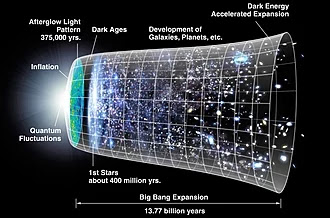Superconductors
A Superconductor is a material that conducts electricity with zero resistance. This means that a superconductor can carry electric current indefinitely without losing energy, this property of materials of conducting electricity with no resistivity is called Superconductivity. Superconductors have other important properties like the Meissner Effect. According to this, at a very low temperature, a superconductor loses its magnetic field, that means no magnetic field exist in a superconductor. The temperature at which a normal material shows superconductivity is called as Critical Temperature. This usually happens at very low temperatures as the resistance of a material decreases with a decrease in temperature. Superconductors are applicable in MRI machines, spectrometers, digital circuits and many other hi-tech devices. Superconductors are still not suitable for daily usage machines and has no public use. However they're very suitable for professional use and the rising in technology can also make it possible to make use of superconductors publicly.
 |
| Superconductor levitating over a magnetic field |
Superconductivity was discovered by Heike Kamerlingh Onnes in the year 1911. He was studying the resistance of mercury at a very low temperature (Cryogenic Temperatures) using liquid helium as the coolant. He almost reached a temperature of 4.2K (-268.8℃) where he observed that resistance of mercury disappeared and the electricity flowed indefinitely. The mercury started acting as a superconductor at a critical temperature of 4.2K. After the discovery of superconductivity, it was also found in several other materials at different critical temperatures over the years.
Many scientists started working on how and why superconductivity works and other properties of superconductors. The important discovery that took in the year 1933 was The Meissner Effect by Meissner and Ochsenfeld. It was experimentally proved that magnetic fields are expelled from a superconductor but was not theoretically proven until the London Theory was proposed.
 |
| Meissner Effect |
- LONDON THEORY
- GINZBURG-LANDAU THEORY
- BCS THEORY
 |
| John Bardeen, Leon Cooper and Robert Schrieffer (Left to right) Winners of the Nobel Prize for Superconductivity |
CLASSIFICATION
Superconductors, as per the Ginzburg-Landau theory, are classified into two broad categories on the basis of their Critical temperatures and response to magnetic field. They are termed as Type-I and Type-II superconductors.
- TYPE I SUPERCONDUCTORS
Type I superconductors are basic elements that conducts electricity. At present the critical temperatures of these conductors lie between 0.000325K to 17.8K at standard values of pressure. Roughly half of the elements of the periodic table are superconductive. Some superconductors require great pressures even at extremely low temperatures to reach the superconducting state. Sulfur is known to be superconductive at a critical temperature of 17K at a pressure of 9.3 million atm (93 x 1010 N/m2). Also Type-I superconductors does not allow weak magnetic fields to pass through it and perfectly exhibit the meissner effect. However if the magnetic field strength applied is greater than a critical value Hc then the superconducting nature of the material is destroyed. Examples of such type are Aluminium, Lead, Mercury and Zinc.
- TYPE II SUPERCONDUCTORS
Type II superconductors are composed of metallic compounds, metal alloys or complex oxides. All these superconductors are known to be high temperature superconductors. The highest temperature reached by a type II superconductor is 203K by Hydrogen Sulfide (H2S). They are likely to be used in machines as reaching such temperatures is not that difficult. They are used as strong electromagnets in MRI (Magnetic Resonance Imaging) machines, particle accelerators etc. They are also observed to absorb some of the magnetic flux when induced to a magnetic field. This strange effect is observed at a certain Critical field strength (H), at higher strengths the superconducting nature of the material is destroyed. Since a small magnetic flux is remained at the superconducting state, they do not fully exhibit the meissner effect. Examples of such conductors are Niobium-Titanium, YBCO (Yttrium-Barium-Copper-Oxide) etc.
HIGH TEMPERATURE SUPERCONDUCTORS
Superconductors usually have a critical temperature below 30K. Until 1986, Superconductors which were discovered had a critical temperature less than 30K but in that year, Scientists discovered a Lanthanum (La) based material which had a critical temperature of 35K. High temperature superconductors are those whose critical temperature lies outside the range of 30K. These superconductors are much more beneficent as they do not need extremely low temperatures to work. Scientists started working on increasing the critical temperature of superconductors. In the above material they replaced Lanthanum with Yttrium and made a material(YBCO) whose critical temperature was raised to 92K. After many years many superconductor materials came into existence and was also tested and experimented to raise the levels of critical temperature. It was May 2014 when Hydrogen Sulfide (H2S) was predicted to have a critical temperature of 80K but when tested in 2015 it was observed to show its superconducting nature just below 203K (-70℃) at high pressures. This discovery was a game changer in the applications of superconductors. This made a step further in making superconductors work at room temperature, however it is still difficult to make use of H2S in daily lives. But the professional work was much benefitted as it was easy to reach such low temperatures with liquid Nitrogen which is easy to make and very cheap.
 |
| Hydrogen Sulfide in its superconducting state. |




HEY ELABORATE IT MORE
ReplyDelete